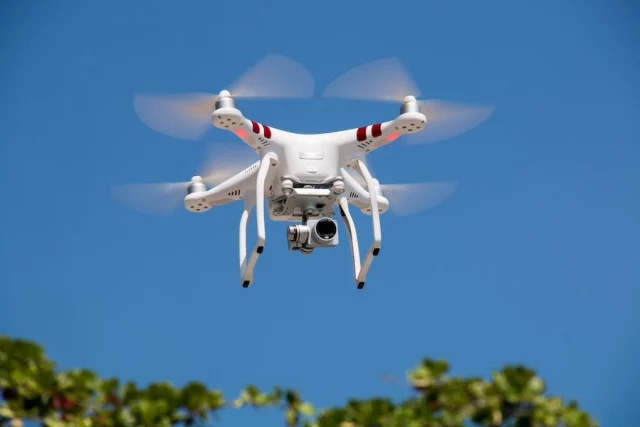Flying a drone is an increasingly popular pastime and for good reason. Drones are a lot of fun, and they offer a unique perspective on the world that can be breathtaking. But flying drones can also be challenging, especially if you’re new to it. So how do you become good at flying a drone? We’ll outline some tips that will help you improve your skills and become a pro drone pilot in no time. So let’s get started!
Get Familiar With How Drones Work
Before you start flying your drone, it’s important to understand the basics of how they work. Drones are unmanned aerial vehicles (UAVs) that are controlled by a remote pilot or by onboard computer systems. They have rotors that lift them into the air and propel them forward, and they are equipped with cameras and sensors that allow them to navigate and avoid obstacles. You can also research more at DronesInsite to see how drones are used in different industries to understand them better. Maybe you’ll even need to look into how your specific type of drone works compared to others because not all drones are the same.
The Different Types Of Drones
There are many different types of drones, each with its own set of advantages and disadvantages. Different drones are better suited for different tasks, so it’s important to choose the right drone for the job you want to do. Here are some of the most popular types of drones:
- Quadcopters: Quadcopters are the most popular type of drone and for good reason. They’re relatively easy to fly and very stable in the air. Many quadcopters also come with built-in cameras, making them perfect for taking aerial photos and videos.
- Fixed-wing Drones: Fixed-wing drones are more aerodynamic than quadcopters and can stay in the air for longer periods. They’re not as easy to fly as quadcopters, but they can cover more ground and are better suited for long-distance flights.
- Multi-rotor Drones: Multi-rotor drones are similar to quadcopters, but they have more than four rotors. This gives them more lifting power and allows them to carry heavier payloads. They’re also more difficult to fly than quadcopters and are usually only used by experienced pilots.
Picking The Right Drone
Now that you know the different types of drones available, it’s time to choose the right one for you. Here are some things to keep in mind when picking a drone:
- Purpose: First, you need to decide what you want to use your drone for. If you’re just looking to take aerial photos and videos, a quadcopter is a good choice. If you want to do long-distance flights, a fixed-wing drone is a better option. And if you need to carry a heavy payload, a multi-rotor drone is your best bet.
- Budget: drones can range in price from less than $100 to thousands of dollars. So it’s important to set a budget before you start shopping. Keep in mind that the most expensive drones aren’t always the best ones. Often, the cheaper drones are just as good as the more expensive ones.
- Features: different drones come with different features. Some drones have built-in cameras while others don’t. Some drones are controlled with a remote while others can be controlled with a smartphone or tablet. And some drones come with GPS while others don’t. Decide which features are important to you and look for a drone that has them.
- Flight Time: the amount of time a drone can stay in the air varies depending on the type of drone and the size of its battery. Quadcopters typically have flight times of around 10 minutes while fixed-wing drones can stay in the air for up to an hour. Multi-rotor drones usually have shorter flight times than quadcopters but can stay in the air for longer than fixed-wing drones.
Familiarize Yourself With The Controls
Once you understand how drones work, it’s time to learn about the controls. Most drones have two joystick-like controllers: one for throttle (up/down) and one for steering (left/right). There are also buttons and switches on the controller that control things like taking pictures or videos, changing the camera angle, or activating special flight modes like “return home” or “headless mode.” Take some time to read the drone’s manual and experiment with the controls to get a feel for how they work. It’s also a good idea to watch some tutorial videos online so you can see the controls in action. Make sure to practice in an open area away from people and obstacles so you can get comfortable with the controls before taking your drone out for a spin.
Check Your Local Drone Laws
Before you start flying your drone, it’s important to make sure you are aware of and following all local drone laws. Depending on where you live, there may be restrictions on where you can fly your drone, how high it can go, and whether or not you need to register it with the government. These laws vary from country to country and even from state to state, so it’s important to do your research before taking your drone out for a flight. You don’t want to get into trouble with the law. For example, in Florida, you are not allowed to fly your drone within 5 miles of an airport without permission from the airport authority.
Practice, Practice, Practice
The best way to become good at flying a drone is to practice as much as possible. Start by taking your drone out for short flights in an open area so you can get comfortable with the controls. Then, try flying in different environments like near trees or tight spaces. As you get more comfortable, you can start trying out new tricks and challenges. There are even competitions you can enter to test your skills. The more you practice, the better you will become at flying a drone.
If you want to become good at flying a drone, you need to practice as much as possible. Familiarize yourself with the controls and check your local drone laws before taking your drone out for a flight. Just keep in mind that drones are not toys and they can be dangerous if not used properly. So make sure to always fly safely and responsibly.














